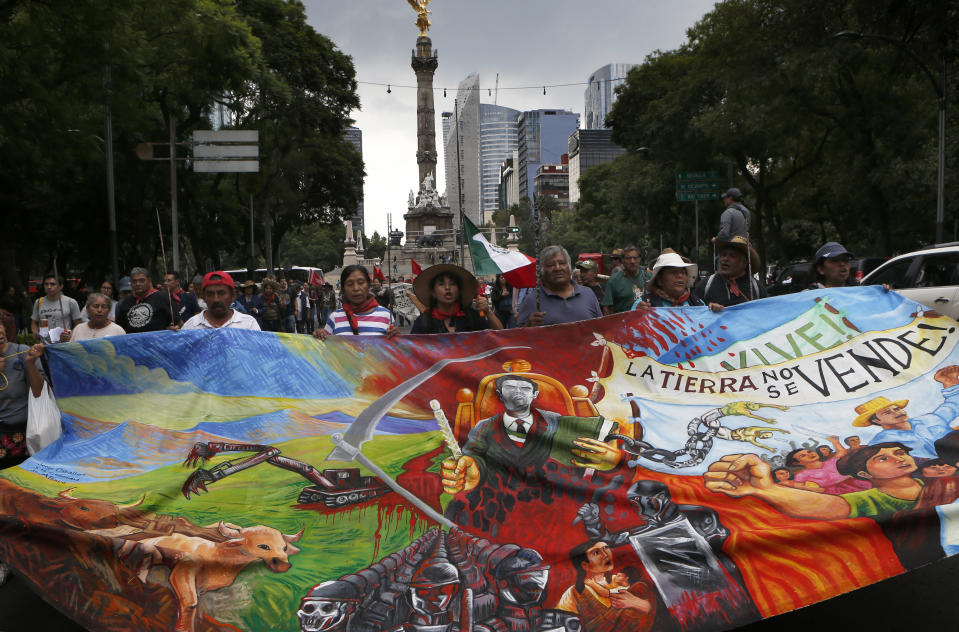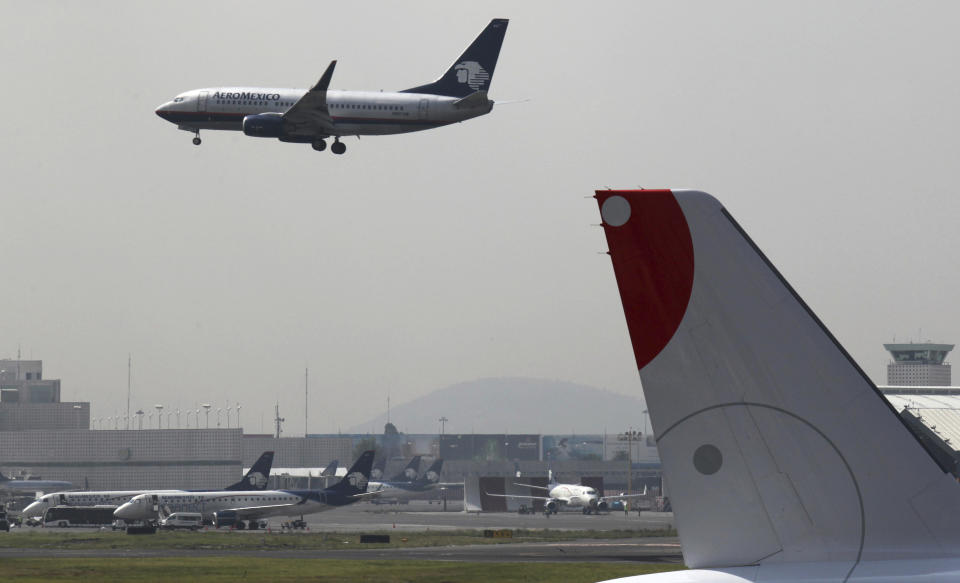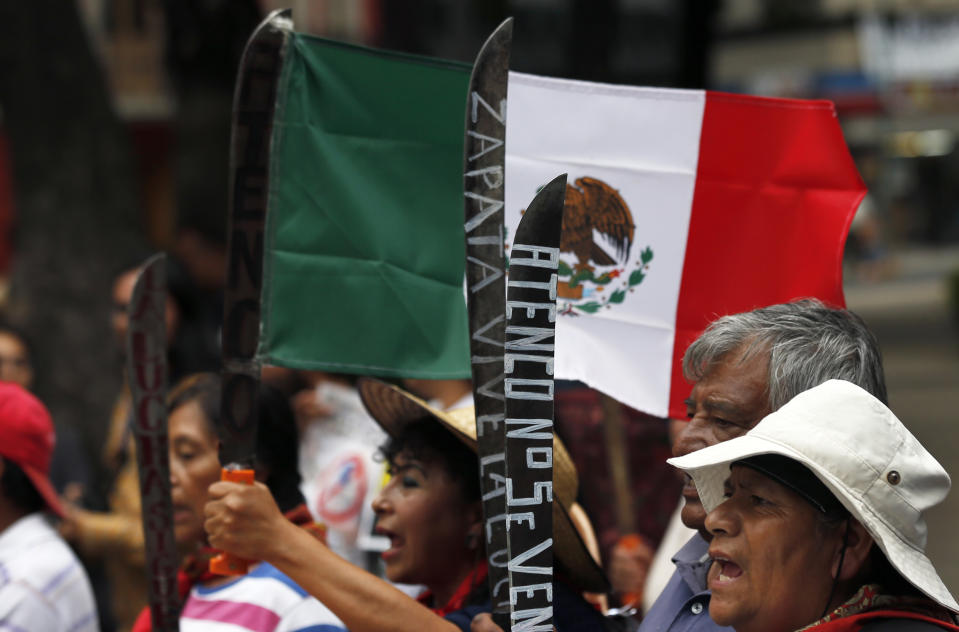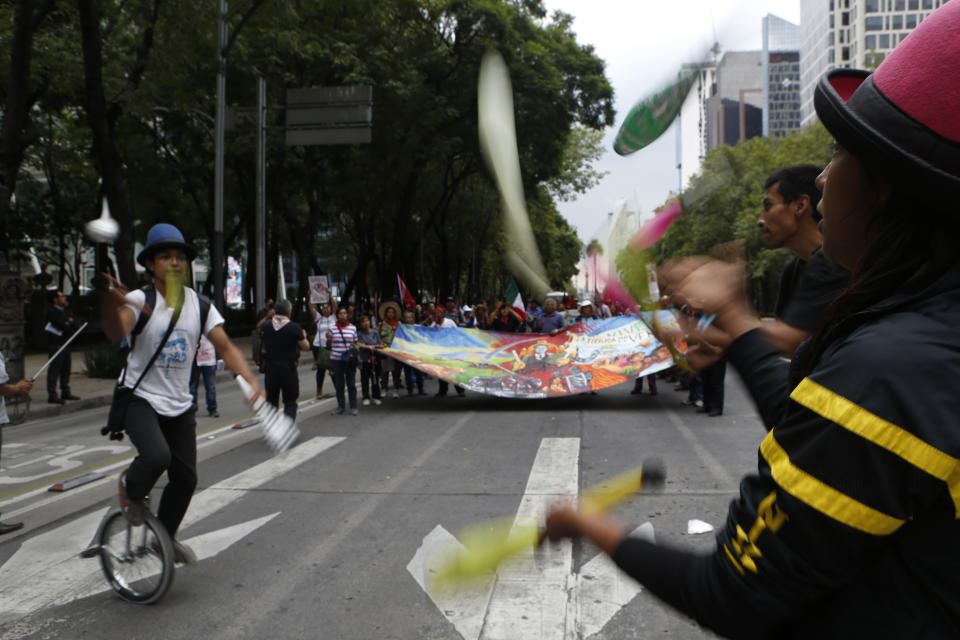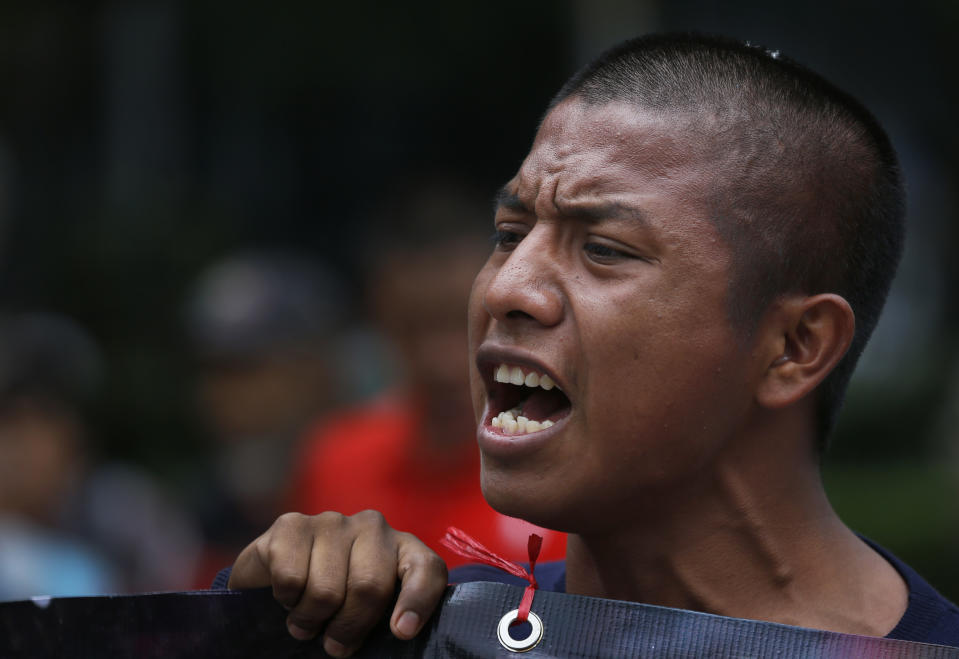Protesters: New Mexico City airport will hurt environment
MEXICO CITY (AP) — Demonstrators marched through Mexico City on Thursday to protest a $15.7-billion airport project that threatens a decades-old effort to restore the lakes that originally covered the valley in which the capital and nearby cities are located.
Carrying banners reading "The earth is not for sale!" a couple of hundred demonstrators followed Ignacio del Valle, a leader from the town of Atenco who has fought plans for a new airport east of the capital since 2001.
"This is the murder of the environment, because the environmental impact has not been measured or recognized," said Del Valle.
Farmers from Atenco and other communities close to the new Mexico City airport — which is about one-third completed — say they were never consulted. They claim the farms and shallow bodies of water in the area provide flood-regulation and fresh air for the metropolis of 20 million.
Former environment secretary Jose Luis Luege said the government is already draining Lake Nabor Carrillo, a shallow 2,265 acres (917 hectare) lake that provides a major habitat for migratory birds.
The new airport — whose construction began in 2016 and was designed in collaboration with celebrated architect Norman Foster — is being built right next to the lake.
Concentrated bird populations are dangerous next to airports because the birds can fly into jet engines. So Lake Nabor Carillo has to go.
Mexico City was founded in 1315 on an island in a lake, which was steadily drained following the 1521 Spanish conquest.
But the dried-out lakebed proved an environmental nightmare, with particles of dust and dried sewage causing dust storms in the city during the dry season. It also flooded periodically in rainy season, something that may happen again to the new airport.
Lake Nabor Carrillo was established in 1982 to replicate a small portion of the old Lake Texcoco, whose final portions were drained by the early 1900s.
Nabor Carrillo absorbed rainwaters and prevented dust storms, part of a larger 1970s reclamation plan known as The Lake Texcoco Project.
"This airport project ends forever the Lake Texcoco Plan," Luege said. "That is something that, from an environmental point of view, is unforgiveable."
The government has given contradictory answers as to whether any lakes can be left around the new airport. The government water agency said some portion of Nabor Carrillo would remain, but only certain bird species less prone to interfering with jets would be allowed; it didn't explain how authorities could exclude some birds but not others.
The agency in charge of building the airport has suggested birds would be encouraged to find other lakes in the Mexico valley; however, as Luege points out, those lakes are highly polluted, many with raw sewage.
President-elect Andres Manuel Lopez Obrador has long opposed the airport project, saying it is too costly.
But walking away from it now would imply losing about $5 billion already committed to the project.
Since his July 1 election victory, Lopez Obrador has backed off threats to simply abandon the project, saying instead he would submit the decision to a public referendum, offering the choice of possibly farming out the needed investment to private companies in a concessionary scheme.
Lopez Obrador has also said that an alternative airport could be built at a nearby military base, but aeronautic experts say that would still be too close to the current, over-crowded 1940s-era Benito Juarez International Airport for both to operate simultaneously.
Critics say the government was not honest about the immense impacts the projects would have. Many critical issues were not seriously contemplated in environmental impact statements on the project dating back to 2014, they say.
"The airport is a real reflection of one of the worst problems we have in Mexico, which is the imperial presidency," said Luege. "It is the president's project, so what does that mean? It has to be approved at any cost."
